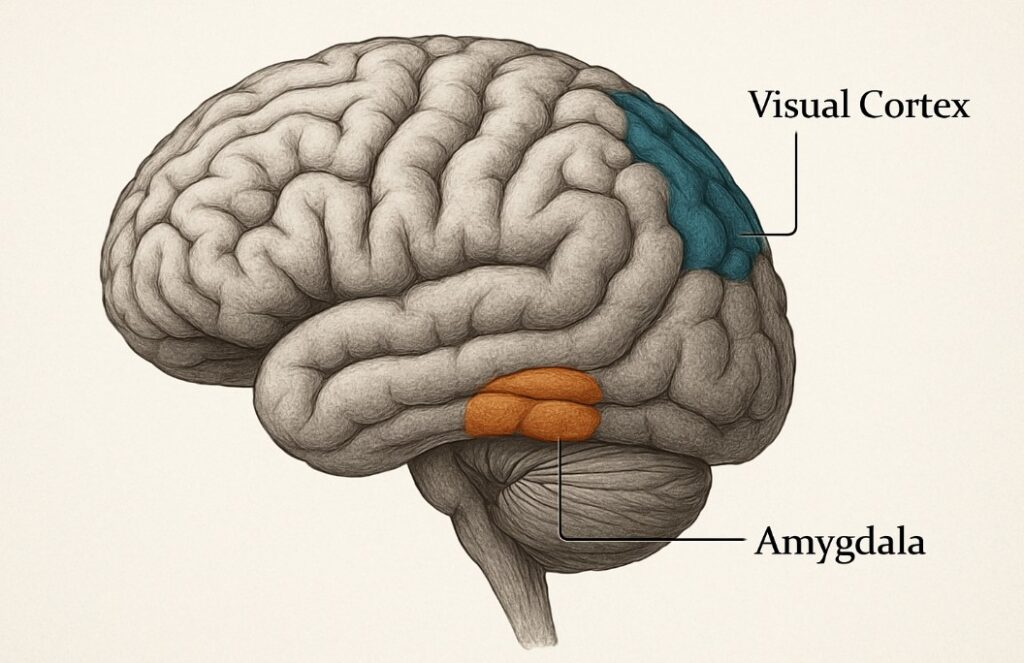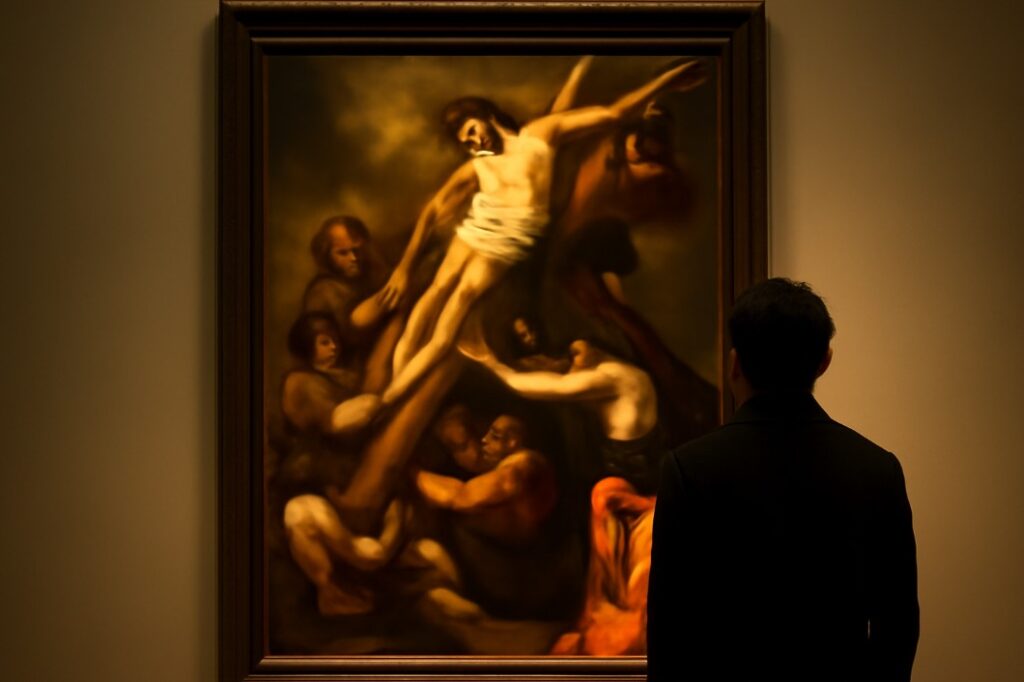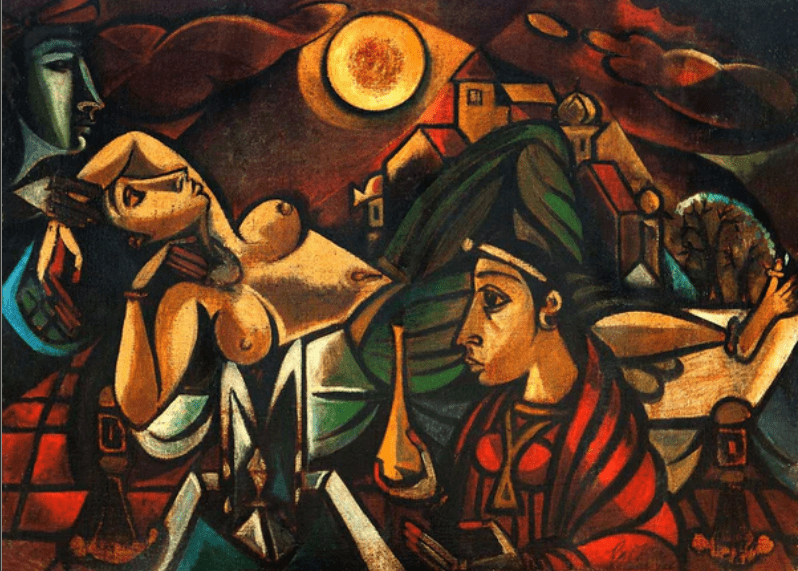The Science Behind Emotional Responses to Visual Art: Why Some Art Feels Powerful
Introduction
Have you ever stood before a painting and felt an inexplicable wave of emotion—goosebumps, a racing heart, or even tears? This isn’t just sentimentality. There’s a fascinating science behind why some art moves us so deeply. From the colors used to the stories told through brushstrokes, our brains and bodies are wired to respond to visual art in ways that can be surprisingly profound.
In this article, we’ll explore why certain artworks evoke powerful emotional reactions, what the science says about our connection to visual art, and how you can better appreciate these responses. Whether you’re a seasoned art lover or new to the world of galleries and canvases, understanding the emotional psychology behind art can transform the way you view it.
The Human Brain and Art: A Natural Connection
Art and the brain are more intimately connected than many realize. Neuroscience has uncovered that when we look at visual art, several parts of the brain light up—not just areas responsible for visual processing, but also regions tied to memory, emotion, and even motor control.
Visual Cortex and Perception
The visual cortex, located in the occipital lobe, is where the brain processes visual information. It interprets shapes, colors, and movement. But when you look at a piece of art, your brain doesn’t stop at recognition—it dives deeper, associating images with personal memories and emotional cues.
Mirror Neurons and Empathy
Mirror neurons play a crucial role in how we emotionally respond to art. These neurons fire both when we perform an action and when we observe someone else performing it. In the context of art, they allow us to “feel” the emotions of the figures depicted in a painting or sculpture.

Emotional Triggers in Art: What Makes Us Feel
Color Psychology
Color has a well-documented psychological impact. Warm tones like red, orange, and yellow can evoke feelings of energy, warmth, or urgency, while cool tones like blue and green tend to calm the mind or evoke melancholy.
- Red: Passion, danger, intensity
- Blue: Calm, sadness, introspection
- Yellow: Joy, vitality, optimism
- Black/Gray: Mystery, seriousness, grief
Studies have shown that colors activate the amygdala, the brain’s emotional center. That’s why abstract paintings full of expressive color can be just as moving as figurative ones.
Composition and Movement
The composition of an artwork—how elements are arranged—can create a sense of harmony or tension. Techniques like leading lines, contrast, and balance guide the viewer’s eyes and evoke subtle emotions.
Dynamic compositions, like those in Baroque art, often simulate motion, prompting physiological reactions like excitement or awe.

Facial Expressions and Body Language
When a portrait or figure in art displays an expressive face or posture, we subconsciously mimic these emotions, thanks again to mirror neurons. This contributes to our emotional involvement.
The Role of Personal Experience and Memory
Art doesn’t exist in a vacuum—our interpretation is deeply personal. The hippocampus, a brain region tied to memory, interacts with the visual cortex when we view art. A painting of a field may remind you of childhood summers, while an abstract piece may evoke a breakup you can’t quite explain.
That’s why two people can have completely different emotional reactions to the same artwork. The brain is essentially layering personal narratives on top of what is being seen.
Cultural Context
Our emotional response to art is also shaped by cultural exposure. For instance, religious iconography may evoke reverence or nostalgia in some, and discomfort or disinterest in others.
For a deeper dive into art and neuroscience, visit NeuroArts Blueprint—a collaborative project on how the arts impact brain health and emotion.
Science-Backed Evidence: What Research Shows
Several scientific studies have tried to quantify emotional responses to visual art. One landmark fMRI study conducted by Semir Zeki at University College London found that viewing artwork deemed “beautiful” activated the brain’s reward center—the same region triggered by romantic love or eating chocolate.
Other findings include:
- Increased dopamine release when viewing aesthetically pleasing images
- Changes in heart rate and galvanic skin response, indicating a physiological reaction to emotional stimuli in art
- Decreased stress and anxiety levels when exposed to art, even for a few minutes
These discoveries affirm that art is not just a form of entertainment—it can be a therapeutic, even transformative, experience.
Why Some Art Leaves Us Cold
Just as some art moves us, others may feel flat or uninspiring. Here’s why:
- Lack of personal relevance: If the content doesn’t connect to your memories or values, you might not feel much.
- Overexposure: Seeing the Mona Lisa on mugs, t-shirts, and memes might reduce its impact in real life.
- Cognitive overload: Highly complex or unfamiliar styles might make the brain work harder to interpret, sometimes reducing emotional connection.
However, even if a piece doesn’t strike you immediately, taking time to understand its story or context can make a difference.
The Power of Art in Everyday Life
You don’t need to be in a museum to experience the emotional depth of visual art. Here are ways to integrate this awareness into daily life:
1. Curate Emotionally Resonant Spaces
Choose artwork for your home that brings comfort, motivation, or introspection. The connection doesn’t have to be rational—it just has to feel right.
Check out curated prints on ISKUSS that span styles like traditional, spiritual, and abstract—designed to evoke meaningful connections.
2. Keep a Visual Journal
Capture your emotional reactions to artworks in a journal. Noticing how and why you respond to different styles can deepen your understanding of yourself and of art.
3. Visit Galleries Mindfully
Slow down. Observe not just the artwork but your reaction to it. Ask yourself: What am I feeling? Why might that be?

Practical Ways to Deepen Your Connection to Art
1. Learn the Backstory
Understanding the context of an artwork—its creator, time period, and symbolism—can ignite emotional resonance.
2. Experiment with Art Creation
You don’t have to be a professional. Painting or sketching can give you insight into how emotion is communicated visually, helping you appreciate others’ art even more.
3. Join Art Communities
Connecting with others through platforms like Instagram, Reddit, or even your local gallery allows you to exchange perspectives and emotional insights.
Emotional Responses Are What Make Art Human
Art doesn’t demand an explanation. Its power often lies in ambiguity. The very fact that we feel something when viewing visual art—even if we can’t name it—is proof of its unique capacity to touch the human spirit.
So next time a painting stops you in your tracks, don’t rush past the feeling. Linger. Let it wash over you. Your brain is doing something magical—bridging color and form with memory, empathy, and emotion.
That’s not just art. That’s connection.
Final Thoughts
The science behind emotional responses to visual art shows us that our feelings are not accidental—they’re biologically and psychologically grounded. Whether through color, composition, or context, the artwork we surround ourselves with has the power to shape our moods, perspectives, and inner lives.
Understanding why some art feels powerful not only enriches your viewing experience but can also help you choose pieces that truly resonate with your soul.
Discover emotion-evoking art styles on ISKUSS: Explore our collections

